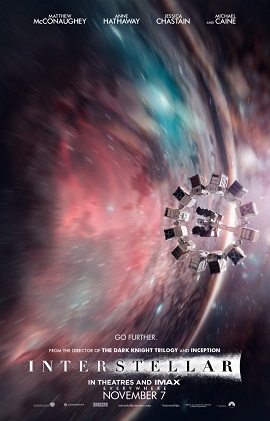Full disclosure, when I walked into the theater to see “Interstellar,” I fully expected to hate it. To my surprise, I walked out after the film having thoroughly enjoyed myself. Despite the fears of a generic “the earth is dead and we need to save humanity” movie that the trailer instilled in me, it was instead a unique take on humanity looking to the stars to save themselves.
Capping in at roughly three hours, “Interstellar” is directed by Christopher Nolan and stars actors Matthew McConaughey and Anne Hathaway. “Interstellar” takes place in a close but drastically changed future where a mysterious pathogen called the “Blight” has killed almost all crops except corn, resulting in a dramatic population decrease, and scientists fearing that corn will be next. Cooper (Matthew McConaughey) a former NASA test pilot, is recruited for a final Hail Mary attempt at saving the human race and has to leave behind his son and young daughter. He is joined by biologist Amelia Brand (Anne Hathaway), as well as physicist Romilly (David Gyasi) and geographer Doyle (Wes Bentley). Many years before, scientists were sent through a wormhole that mysteriously formed near Saturn to find habitable worlds. Dubbed the Lazarus Missions, intended to “resurrect” humanity, Cooper and his crewmates now follow in their footsteps. Their mission is to investigate the planets that appear to be able to sustain life, and find a new home for humanity.
One of the things that I loved about the movie was how visceral it felt. Everything felt if not necessarily realistic at least plausible. A common thread in recent sci-fi movies tends to be hi-tech gadgets that handwave scientific impossibilities (see every single movie where they go faster than light) and while they definitely have their place, it’s nice to also have movies that explore the problems those movies gloss over. In “Interstellar,” there are frequent dust storms from erosion caused by the lack of crops. There are hibernation units on the ship because they can’t travel faster than light and so space travel takes a long time. Those details, and others, help add a veneer of realism to the entire movie.
Another thing I loved was the variety of planets they showed. They were looking for a new world, a planet with breathable atmosphere and basic resources, but not necessarily preexisting life which gave the filmmakers a lot more leeway besides “earth but with more moons and more purple.”
The robots managed to be charming and provide comic relief without relying on miscommunication gags or other forced humor and they were very well utilized in the movie. Their design was also interesting and at the same time was very utilitarian. which fit in with their use as exploratory instruments.
The science in the movie was also thought out. While I wouldn’t be able to tell if it wasn’t accurate, all of the science sounded plausible enough for me to buy it, which when it comes to movies, is what really counts.
Pretty much the only thing that I disliked about the movie was the ending. The first three quarters were fantastic but unfortunately the last quarter went too far for me to suspend my disbelief. All in all, I would happily see Interstellar again, and I think that it is a worthwhile use of three hours.


